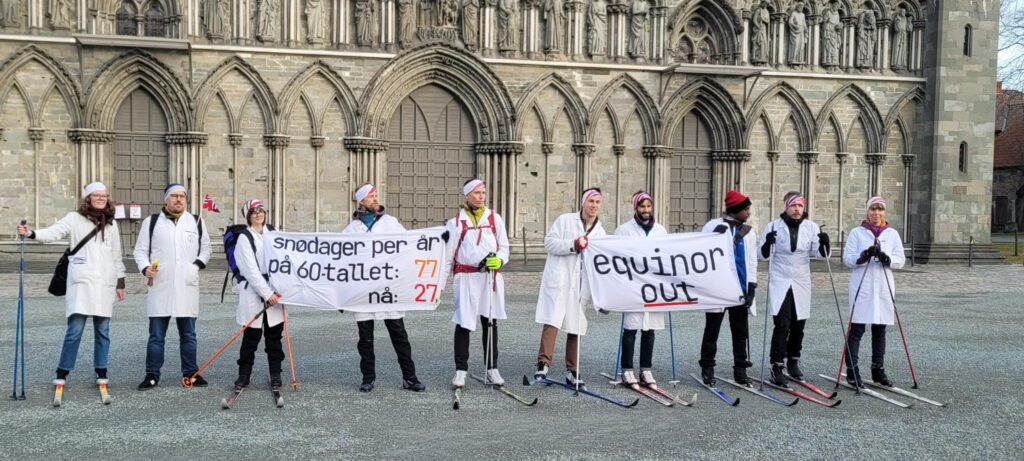The American Lung Association (ALA) released their annual State of the Air report today, followed by a live discussion on Twitter where the organization answered questions. While the report offers some positive news for American citizens, it also shows us that the Clean Air Act is under attack from the dirty energy industry.
Here are the highlights from this year’s report:
More than 4 in 10 people (41 %) in the United States live in counties that have unhealthful levels of either ozone or particle pollution. Over 127.2 million Americans live in the 235 counties where they are exposed to unhealthful levels of air pollution in the form of either ozone or short-term or year-round levels of particles.
Over 5.7 million people (1.9%) in the United States live in six counties with unhealthful levels of all three: ozone and short-term and year-round particle pollution: ozone and short-term and year-round particle pollution.
The strongest improvement came in reducing ozone smog levels across the nation. More than half of the country’s most-smog-polluted cities experienced their best year yet. Twenty two of the 25 cities with the most ozone pollution improved their air quality over the past year’s report. More than half of the country’s most smog-polluted cities experienced their best year yet. Still, nearly four in ten people in the U.S. (37.8%) live in areas with unhealthful levels of ozone pollution.
The ALA also lists the health effects of this year’s two biggest pollutants – ozone and particle pollution:
A major review of particle pollution and other air pollutants concluded that many cause heart attacks, even when people inhaled elevated levels for as little as one week.1 This review looked at evidence from 177 studies and found that particle pollution (both fine and coarse), carbon monoxide, nitrogen oxides, and sulfur dioxide all increased the risk of heart attack.
Particle pollution that lasts for just a short while may be causing strokes, even at levels considered safe, according to a study of Boston area patients. In particular, researchers found that breathing levels of traffic-related particles were linked to increased risk of stroke within 12 to 14 hours of breathing them.
Up to 35,700 premature deaths can be prevented in the United States every year if the Environmental Protection Agency (EPA) strengthens the health standards for particle pollution—also known as soot—according to a report, Sick of Soot: How the EPA Can Save Lives by Cleaning Up Fine Particle Pollution, released in November by the American Lung Association, Clean Air Task Force and Earthjustice.
A growing body of evidence suggests breathing pollution from heavy traffic may cause new cases of asthma in children.
Emerging research has found particle pollution associated with increasing the risk of new cases of three chronic diseases in adults: adult-onset asthma, diabetes, and COPD, especially in people who already have asthma or diabetes.
Research had already connected pollution from heavy highway traffic to higher risks for heart attack, allergies, premature births and the death of infants around the time they are born. Evidence of the impact of traffic pollution, even in a city with generally “cleaner” air, expanded the concern over the health effects of chronic exposure to exhaust from heavy traffic.
The main event in this year’s report release was the live Twitter Q&A, during which the ALA had experts on hand ready to answer questions. During the conversation, ALA revealed several pieces of information that indicate that the Clean Air Act is clearly under attack from both industry and industry-friendly politicians.
ALA claimed during the conversation that the Clean Air Act had received a significant cut in funding this past year (the funding cut was part of the $1.5 billion that House Republicans cut from the EPA’s 2012 budget.) The ALA also told us that the coal industry alone had spent more than $40 million in the last quarter of 2011 to fight Clean Air standards.
ALA also said that the oil industry was working to convince Congress to cut the EPA budget in order to pay for additional big oil subsidies – This is part of the aptly named GASP Act, which guts many of the protections that the Clean Air Act had established decades ago.
One of the most alarming aspects of the Q&A was when the ALA revealed that more than 127 million Americans – well over one-third of the U.S. population – live in areas that received a failing grade for air quality standards in at least one area. 5.7 million live in areas that failed every air quality test. 50 million Americans live in areas where the level of particle pollution (a mixture of ash, soot, diesel exhaust, chemicals, metals, and aerosols) has actually increased in spite of clean air protections.
There was also some positive news during the Q & A, specifically the fact that, if all aspects of the Clean Air Act were properly enforced and fully funded, we could save 230,000 lives a year and save $2 trillion annually on healthcare-related expenses by the year 2020.
The ALA has developed a helpful tool on their website to help visitors compare the air in their city to that in other areas of the country. They also have created a site – FightingForAir – that helps engage the public and tells people how to fight back against corporate polluters.
While some areas of the country experienced a decline in air pollution, there is clearly a long road ahead for those areas that have been in a steady decline over the years. And as long as the industry money continues to flow into campaigns to derail the Clean Air Act, this will always be an uphill battle.
Subscribe to our newsletter
Stay up to date with DeSmog news and alerts







